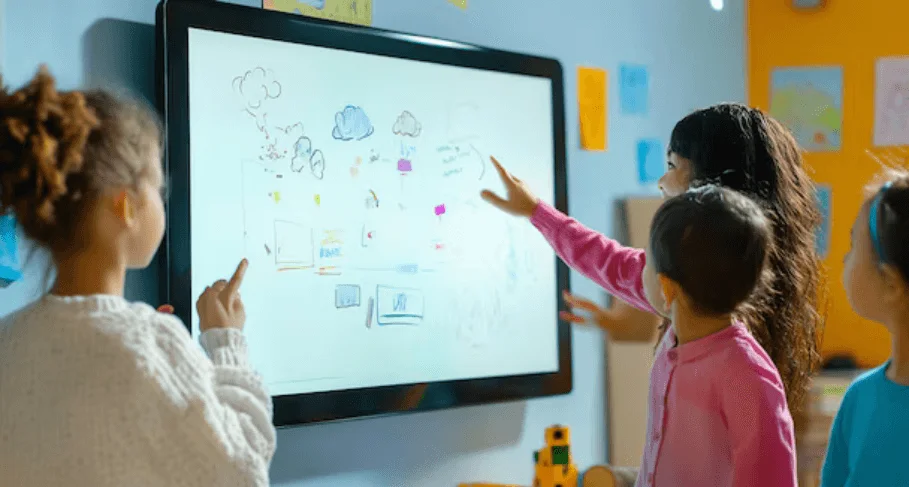Effective classroom engagement strategies are gaining momentum in higher education. “Engaging and Enriching” the teaching-learning experience is the need of the hour. At a border level, the” SMART” Board is an interactive whiteboard that allows users to interact with digital content.” SMART Boards are touch-sensitive devices. They enable the user to write on them with a finger or a special stylus. Smart boards are positively revolutionizing classroom engagement.
Smart boards help to disseminate knowledge in an interactive manner by facilitating the digital content display, thereby enriching the teaching-learning experience. Every learner should leverage the below 7 E’s from a smart board-enabled classroom:
- Effective Visual learning
- Enhanced classroom engagement
- Enhanced access to digital resources
- Experiential learning
- Enhanced digital literacy
- Enhanced adaptability to diverse learning skills
- Effective collaborative learning
In a conventional setup, the students are bound to imagine the concepts in accordance with their own capabilities. When assisted with smart boards, they get a clear idea through audio-video visuals, thereby gaining much more conceptual clarity of core themes. The smart board-assisted teaching learning process helps to correlate the learning with real-time applications, which helps retain the significant aspects of the learning for a longer period. All these aspects help the teaching-learning community to cater for the diversified learning needs of 21st-century learners. The teaching-learning community should know the fundamental aspects of touchscreen gestures, access to compatible devices, basic knowledge about software, collaborative tools, and access to optional accessories as needed. They also have a built-in computer system that runs on an operating system, such as Android or Windows and supports various applications and software. Digital smart boards can be used for virtual field trips and industry visits.
According to a 2017 Journal of Educational Computing Research study, the integration of smart boards in lessons led to a 20–25% improvement in levels 1 and 2 of revised Bloom’s taxonomy, that is, in understanding and information retention compared to traditional teaching methods. Research also supports with evidence that students engage more actively with lessons when they can manipulate and annotate content on the board themselves, leading to better participatory learning. Smartboard usage helps integrate ICT usage in every classroom in a smarter way. It also promotes inclusivity and accessibility in education.
Could all education institutions go for smart boards?
Academically, there is no restriction on using the smart boards, but at the end of the day, management needs to take a call due to the cost involved. Based on the need, it is recommended to go for smart boards and provide a platform to integrate technology in every possible way in the classroom. However, successful implementation depends on the behavioural intention of the concerned stakeholders. It needs proper training, intention to use technology, and thoughtful integration into the curriculum to bring effective usage and leverage the benefits accordingly. The implementation reviews at many places are positive in terms of effective classroom engagements.
